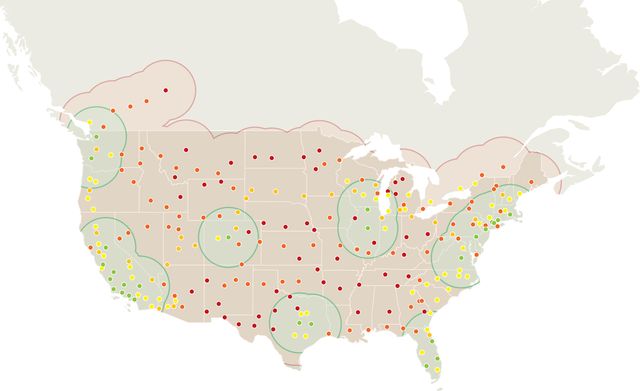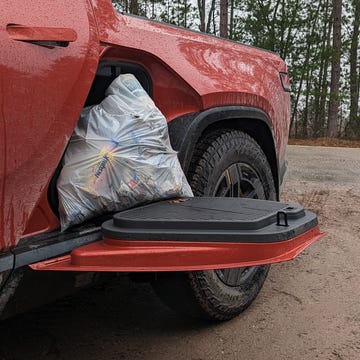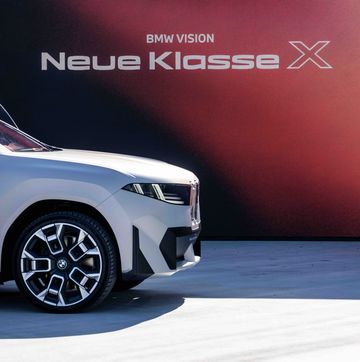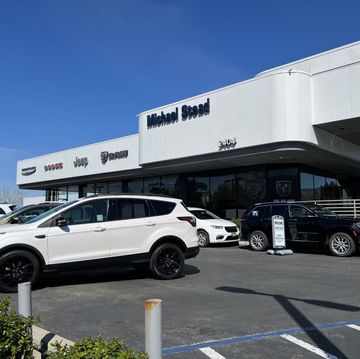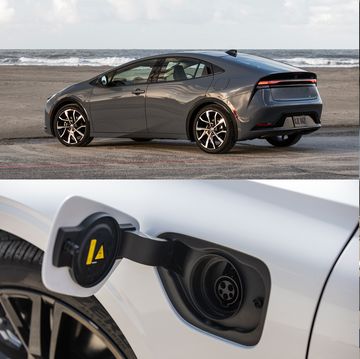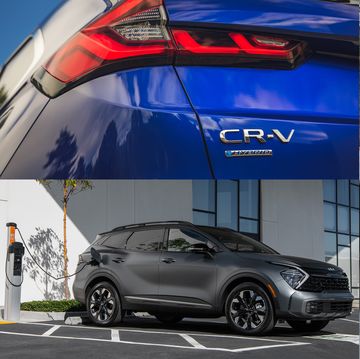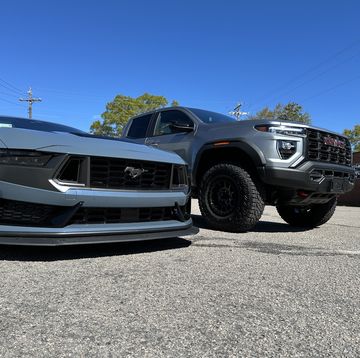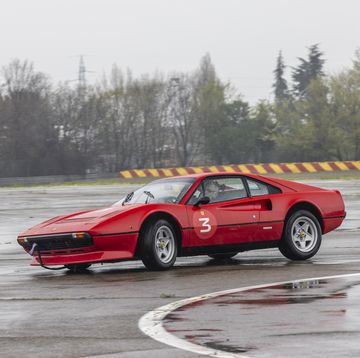From the November 2013 Issue of Car and Driver
Electric cars face daunting roadblocks on the entrance ramp to mainstream acceptance, including matching or beating a conventional car’s performance, stretching the driving range between recharging stops, cutting the time required for a recharge from several hours to a few minutes, and, most notably, lowering sticker shock to somewhere below electrocution.
While Mini Es, Mitsubishi i-MiEVs, Nissan Leafs, and Smart electrics have wrestled with these issues, they all bow down to the Tesla Model S, the thinking driver’s electric car. Consumer Reports called it the best car it has ever reviewed. We called it the car to buy when you’re buying electric.
These accolades for Tesla have piqued the interest of both investors and General Motors. To buttress its reputation as the breakthrough electric-car maker, Tesla is implementing two notable advancements: rapid recharging at company-owned Supercharger stations, and a means of exchanging a depleted battery pack for a full tank of electrons in 90 seconds.
Nearly two dozen Supercharger stations are up and running, and Tesla plans to spread them across the U.S. and into Canada within two years. These hookups zap a Tesla S’s battery pack with 120 kilowatts of DC, 17 times the power available at 30-amp public charging stations and 13 times that provided by 40-amp AC home service. Tesla claims that plugging in at a Supercharger station for 20 minutes restores half the Model S’s charge. To sweeten the deal, the only cost is for the cup of coffee or lunch you enjoy while your car is juiced.
Battery swapping is Tesla’s second innovation. You park a Model S in a designated spot at a Supercharger station and the magic begins in the car’s shadow. The floor opens, computer-controlled tools unscrew the 39 fasteners that attach the 61-by-100-by-4-inch battery pack to the car, and a fixture lowers the 1300-pound box containing more than 7000 cells into a pit. A fully charged replacement battery is hoisted into place, and all power, cooling, and battery-diagnostic connections are restored. Automatic screwdrivers spin the fasteners to their factory torque spec, completing the swap in a minute and a half.
There is no grease monkey working under the car. The Model S was designed for rapid, automated battery changing with quick-release fluid and electrical connections. From the start, Elon Musk’s engineers were smart enough to realize that hours-long recharging is a joy killer for anyone hoping to use an electric car for long trips. Tesla’s battery-swap service uses the same assembly equipment in place at the Model S plant in Fremont, California. Supercharger stations up and down the West Coast’s Interstate 5 and from Washington, D.C., to Boston should begin offering this convenience by the end of this year.
The financial aspects are more complex than the mechanical details. A Tesla S owner will pay $60 to $80 for a swap, plus the cost of shipping the battery back to a Tesla service center if going back to the same Supercharger station to re-swap is inconvenient. But the real return on Tesla’s investment of $500,000 per Supercharger station will come from the valuable (and saleable) zero-emissions credits Tesla earns in California. During the first half of this year, Tesla earned $137 million selling its ZEV credits, more than enough to fund the 237 Supercharger stations planned for the U.S. and Canada.
Exchanging batteries is not a new idea. Electric delivery trucks used them more than a century ago, and they kept a fleet of buses rolling at the 2008 Summer Olympics in Beijing. But Tesla’s automated battery-swap scheme is the best hope today’s electrics have for achieving practically uninterrupted mobility.
